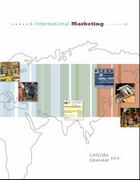Question
) In a, b, and c you will model the stagflation of the 1970s . a. Draw the short-run effects of a negative real shock
) In a, b, and c you will model the stagflation of the 1970s
. a. Draw the short-run effects of a negative real shock (like the Arab oil embargo of 1973). Label the original equilibrium "a" and the first short-run equilibrium "b1". Answer in words: what has happened to real GDP growth and to inflation? b. The Fed is supposed to aim for steady price levels and full employment. Assume for this part b that SRAS's expected inflation is the inflation rate of equilibrium b1 from part a. Draw a new SRAS if necessary. After that, draw the effects of an increase in the money supply that would return the economy to the original (pre-embargo) rate of real growth (i.e. the 1972 natural rate of unemployment) In the short run. Label this short run equilibrium "b2." Answer in words: what has happened to real GDP growth and to inflation? c. On your diagram, draw the long run equilibrium given the negative real shock in part a and the monetary policy response in part b. Label the long run equilibrium "c." Answer in words: what has happened to real GDP growth and to inflation since short-run equilibrium b2? How do growth and inflation in the seventies at "c" with compare with growth and inflation in the sixties at "a"?
Step by Step Solution
There are 3 Steps involved in it
Step: 1

Get Instant Access to Expert-Tailored Solutions
See step-by-step solutions with expert insights and AI powered tools for academic success
Step: 2

Step: 3

Ace Your Homework with AI
Get the answers you need in no time with our AI-driven, step-by-step assistance
Get Started


